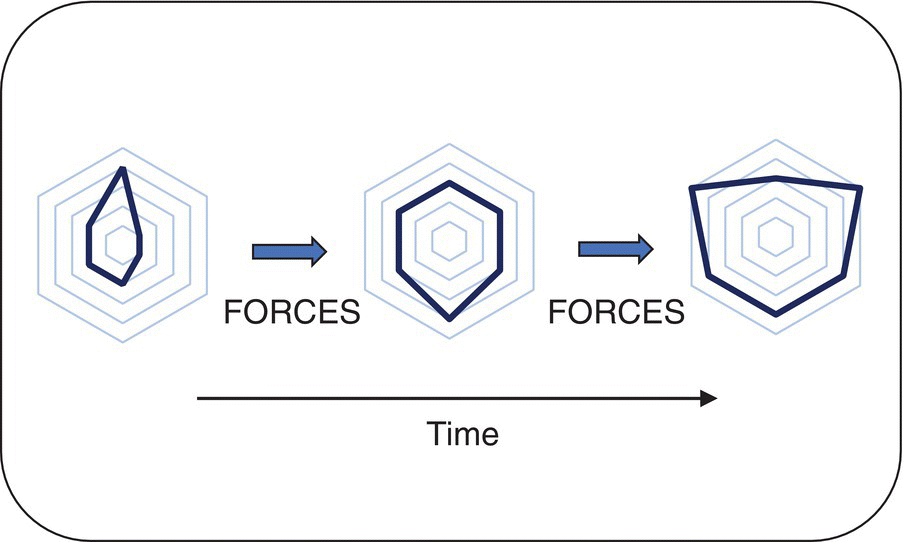7THREE FORCES
One of the things we could benefit from is a little bit more attention to apprenticeship – on the job learning, the student becoming the master kind. … When I do see that happening, I think it is usually a very positive thing.
– Roche systems engineer Mike Celentano
As the old adage goes, “Nothing is constant except change.” In the previous chapter, we saw how someone could document and visualize their PROFICIENCY PROFILE – a snapshot of their strengths and weaknesses at any moment in time. Gradually, that PROFILE will change in ways determined primarily by the application of the three forces explored in this chapter – experiences, mentoring, and education & training – which are listed in order of importance for a systems engineer’s growth based on interviews with more than 350 Helix participants. Figure 7.1 shows a sequence of PROFICIENCY PROFILES that reflect the impact of forces over time.

FIGURE 7.1 A PROFILE changes over time through the application of forces.
In this example, proficiency strength changes dramatically over time. For example, TECHNICAL LEADERSHIP begins rather weak as 2 in the first PROFILE but grows to 3 in the second PROFILE and to 5 in the third. However, Figure 7.1 does not reveal the specific forces that caused that sequence of changes to happen, such as earning a master’s degree or taking on a challenging new position. A visualization ...
Get The Paradoxical Mindset of Systems Engineers now with the O’Reilly learning platform.
O’Reilly members experience books, live events, courses curated by job role, and more from O’Reilly and nearly 200 top publishers.

